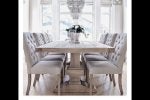OK experts I am going to be starting on my next project soon and need some help with this design. Posted the picture below
I plan to make these legs by laminating 3/4 wood together, routing the curves by template, and adding the mitered trim.
You can see in the picture that is how they did it as well (I think) ...The curves I can cut with the router template before laminating are the very bottom part and the middle part facing the camera BUT how can I cut the curves on the left and right side of the legs towards the bottom and middle?? The router bit is not long enough to curve the say 6" wide board.
I plan to make these legs by laminating 3/4 wood together, routing the curves by template, and adding the mitered trim.
You can see in the picture that is how they did it as well (I think) ...The curves I can cut with the router template before laminating are the very bottom part and the middle part facing the camera BUT how can I cut the curves on the left and right side of the legs towards the bottom and middle?? The router bit is not long enough to curve the say 6" wide board.






